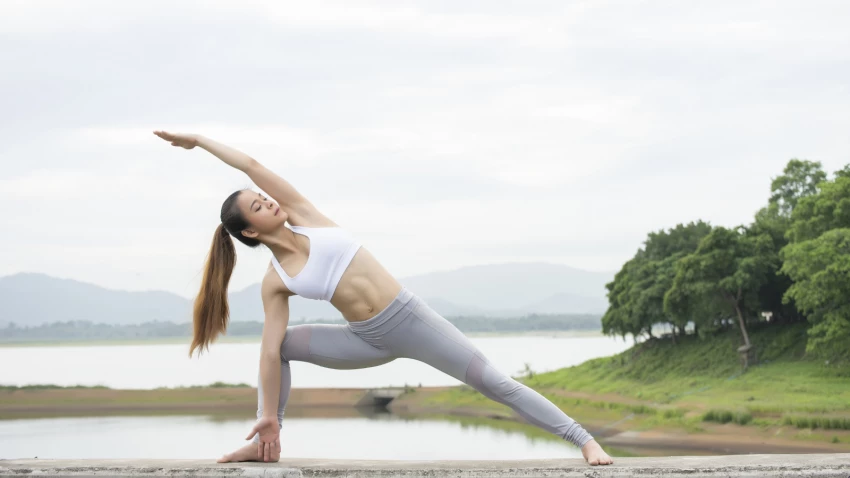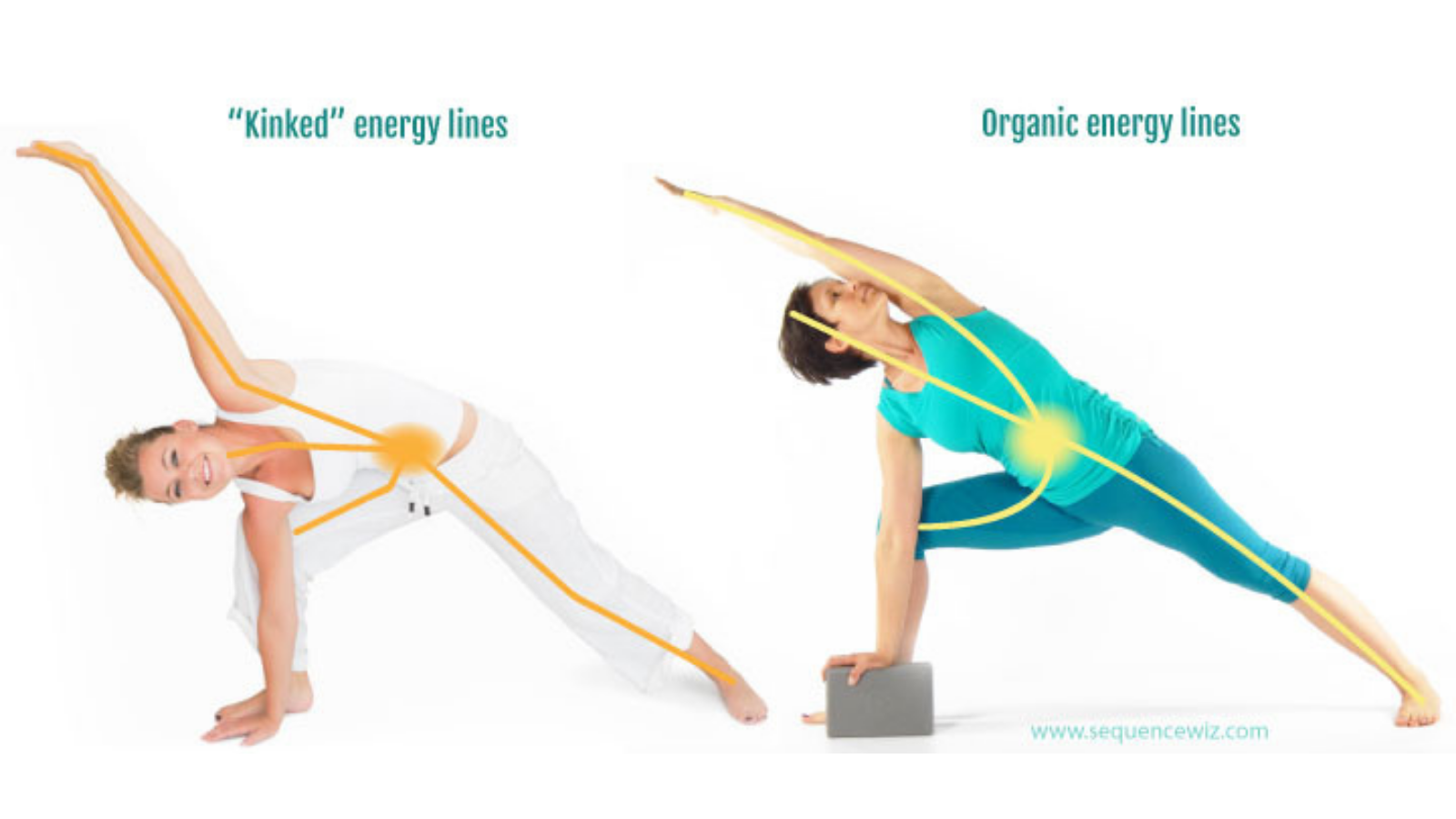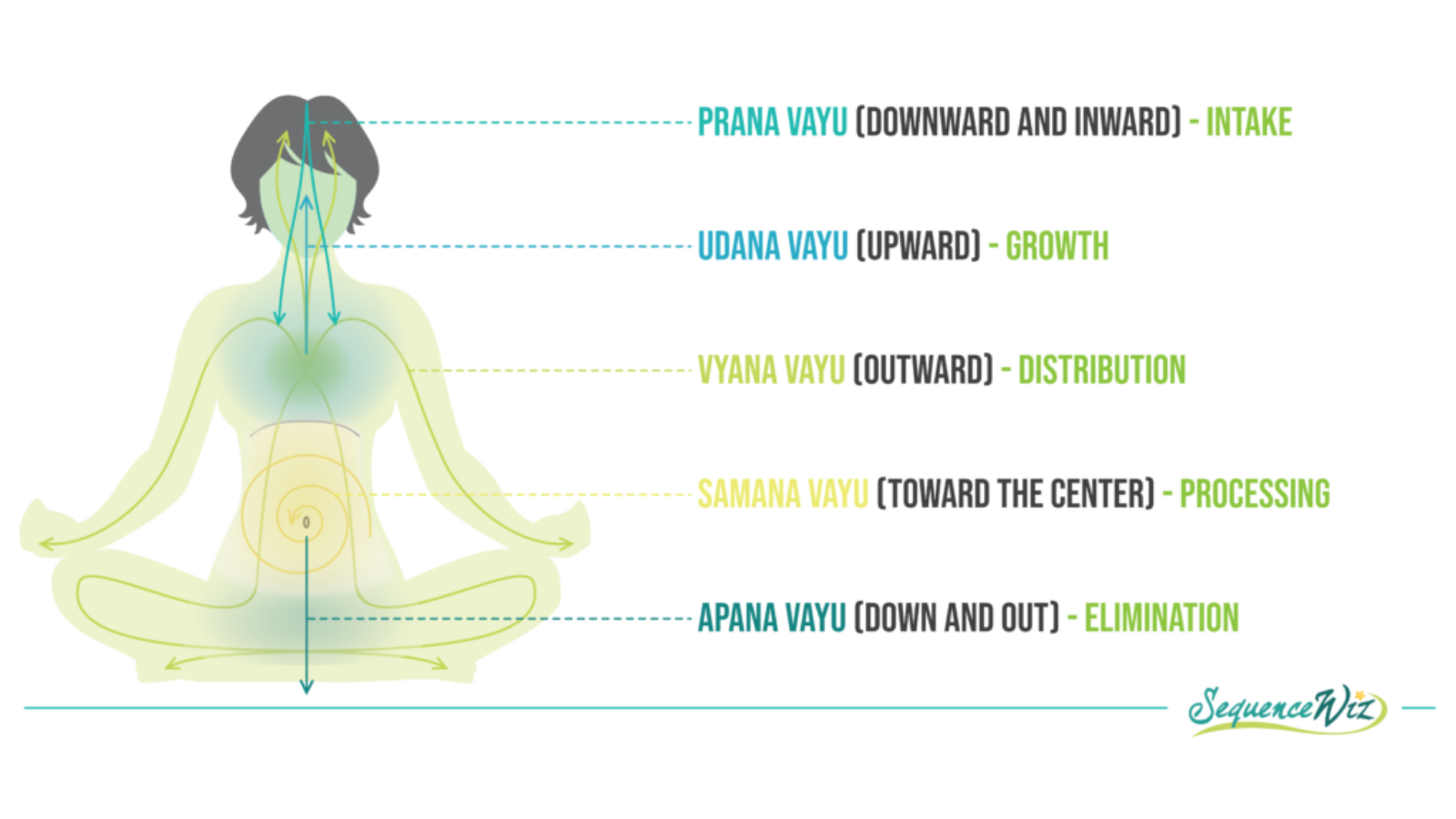Subtle Yoga Body: How Prana Flows

 The Western medical tradition has adopted a “zoom in” approach to our health and wellness. It divides the body into organ systems that have specific missions and perform coordinated activity. This makes it easier to study and understand what’s happening on the level of physiology.
The Western medical tradition has adopted a “zoom in” approach to our health and wellness. It divides the body into organ systems that have specific missions and perform coordinated activity. This makes it easier to study and understand what’s happening on the level of physiology.
Whenever a doctor is trying to figure out what’s going on with a patient, she will first zoom in from the level of the entire organism to the organ system (circulatory, respiratory, digestive, and so on), then, if necessary, to the specific organ (heart, lungs, stomach, etc.). Western medicine has developed its own set of tools (specifically medication and surgery) to target very specific organs, hormones, types of cells, and so on.
Yoga and the Flow of Prana
In yoga therapy, we usually move in the opposite direction and adopt a “zoom-out” approach. We try to understand how a specific health issue fits into a pattern of physiological imbalance throughout the entire system. That is why instead of looking at specific organs, yoga therapy focuses on the movement of vital energy (prana) throughout the system.
Prana is said to carry nourishment to every part of the body along its many channels called nadis. When the flow of energy is smooth and consistent, it reaches every nook and cranny, ensuring that the body remains healthy and disease-free. When the flow of energy becomes disrupted in some way, disease follows. This process is similar to the water flowing through your garden hose: if you kink it, the flow will stop.
This is why in our asana (yoga postures) practice we consistently work on “un-kinking the hose” by arranging the body into different shapes and creating clear pathways for the energy to flow. Then we use breath and attention to intentionally move the energy along those energy lines to facilitate prana flow through the entire system. This is why we call yoga poses “prana pumps.” They help us pump the energy throughout the body.

Yoga and Internal Equilibrium
In yoga therapy, when a student describes a specific health challenge, we try to understand it from the perspective of subtle energetic imbalance. We use traditional yogic models that reflect different patterns of prana flow. Most of them are based on the idea of balance between opposing forces.
The human body constantly strives to maintain the state of internal equilibrium on the levels of body temperature, nutrient concentration, oxygen/carbon dioxide levels, body fluid volume, waste product concentration, and blood pressure. Each of those factors needs to remain within a certain range for the body to stay healthy. There is a constant push and pull going on between the opposing forces as the body adapts and readjusts itself to the changing internal and external environment.
3 Yoga Models for Prana Flow
There are three main yoga models that describe different aspects of prana flow; we often use them in our effort to understand what’s happening on the level of physiology.
1. Excess/Deficiency Model (Brhmana/Langhana Model)

Everything you subject yourself to in your daily life either depletes your energy or regenerates it. You can think of it in terms of your physiological “body budget.” Any activity or situation can be either stimulating or sedating and more or less pleasant. The way you feel at any given moment is not really a reflection of your external reality, but a reflection of your internal physiological balance.
Your yoga practice can become an effective strategy for managing your body budget. It can help you move toward a more pleasant state and closer to the balance point between the hyper-aroused and hypo-aroused states. You would need different types of practices for stimulating your energy and unwinding. The Brhmana/Langhana Model helps manage your body budget and facilitate either energetic deposits or withdrawals from the system as necessary.
Brhmana practices are appropriate for the hypo-aroused states when your system is weak and depleted. Brhmana means “to build, nourish” and it is supposed to build your energy. Brhmana practices are “energetic deposits.”
Langhana practices are meant for the hyper-aroused states when there is too much agitation in the system. Langhana means “to eliminate, reduce.” It helps rid your system of any kind of excess. Langhana is not simply about calming down, it’s about purging, as well. Langhana practices are “energetic withdrawals.”
The Brhmana/Langhana Model is very useful for managing our day-to-day energy, but it becomes even more important in a therapeutic context, when students are dealing with complex health issues. In some situations, we prioritize purifying the system to get rid of old waste, and in others, we focus on strengthening the system to build up the body’s own defenses. For many diseases (and associated treatments) we would need to both purify and strengthen the system.
2. Heating / Cooling Model (The Nadis)

Most organs in the body (including cerebral hemispheres) are innervated by fibers from both sympathetic (fight-or-flight) and parasympathetic (rest-and-digest) nervous systems. We have one set of nerves that covers the right side of the body and the right nostril, and another one that covers the left side and the left nostril. Those fibers have opposing effects. This means that at any given moment you have sympathetic dominance on one side of the body (and breathe mostly through that nostril) and parasympathetic dominance on the other. This impacts your heart rate, blood pressure, respiratory rate, hormone levels, body temperature, and overall state. After a certain period, the dominance switches. This is called “lateralized ultradian rhythms of the autonomic nervous system.” The nasal cycle is an indicator of the switch that happens between the sympathetic nervous system and parasympathetic nervous system from one side to another.
Yogis have used different language to describe it. They said that our energy balance is affected by the flow of energy along three major channels: ida, pingala, and sushumna nadis. Ida (the lunar channel) is cooling and has an overall feminine quality; it terminates at the left nostril. Pingala (the solar channel) is heating and has an overall masculine quality; it terminates at the right nostril.
Breathing in through a nostril will emphasize the qualities of that channel; breathing out through the nostril will sedate the corresponding channel. This model is used widely in a therapeutic context when there is “too much heat” or “not enough heat” in someone’s system. When the two sides are imbalanced, the energy cannot enter the central channel sushumna nadi and rise up.
3. The Pancha Vayu Model

Instead of dividing the organs into systems based on their function, the yoga tradition focuses on the movement of nourishment throughout the system. It recognizes that for the body to be alive and healthy you need to take in nourishment (in the form of food, water, air, or experiences). Then you need to process it somehow, distribute and absorb the nutrients, eliminate waste, and, as a result, heal, grow and evolve. Multiple organ systems are involved in each aspect of this process. If something begins to malfunction, the first question you ask is not which organ system is affected (circulatory, digestive, immune, respiratory, etc.), but which direction of movement are you having trouble with (taking stuff in, processing it, distributing it, eliminating it or getting nourishment from it).
It is said that there are specific currents of energy that guide each one of those directional movements and there are specific strategies that you can employ to facilitate healing. This approach is called The Pancha Vayu Model and it can be very effective in understanding and addressing physiological imbalances.
Restoring Balance Through Yogic and Ayurvedic Models
There are other yogic and Ayurvedic models that can be used to address physiological imbalances:
- Gunas (Sattva/Rajas/Tamas)
- Doshas (Vata/Pitta/Kapha)
- Vital essences (Prana/Tejas/Ojas)
- Chakras
- Bandhas
- Mudras
The choice of an appropriate model will depend on the type of manifested imbalance. All of those models are non-invasive and substance-free; they take into account the whole body. They can be used in conjunction with traditional medical treatments and usually have no side effects. However, to employ those models effectively you would need to make a mental shift from thinking about “fixing a problem” to thinking about “restoring balance.”
Also, read...
Teaching Svadhyaya: 3 Ways to Encourage Self-Study in Yoga
In Celebration of Gray-Haired Yoga – Busting the Myth of the Yoga Body
Related courses

Educated as a school teacher, Olga Kabel has been teaching yoga for over 14 years. She completed multiple Yoga Teacher Training Programs but discovered the strongest connection to the Krishnamacharya/ T.K.V. Desikachar lineage. She had studied with Gary Kraftsow and American Viniyoga Institute (2004-2006) and received her Viniyoga Teacher diploma in July 2006, becoming an AVI-certified Yoga Therapist in April 2011. Olga is a founder and managing director of Sequence Wiz— a web-based yoga sequence builder that assists yoga teachers and yoga therapists in creating and organizing yoga practices. It also features simple, informational articles on how to sequence yoga practices for maximum effectiveness. Olga strongly believes in the healing power of this ancient discipline on every level: physical, psychological, and spiritual. She strives to make yoga practices accessible to students of any age, physical ability, and medical history, specializing in helping her students relieve muscle aches and pains, manage stress and anxiety, and develop mental focus.




